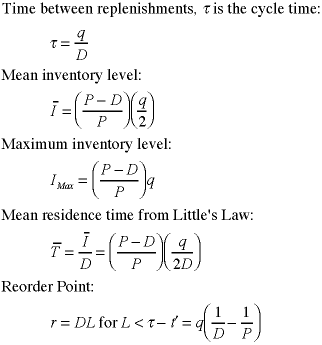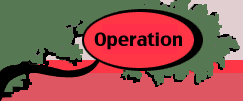| To construct a mathematical
model describing the economic costs or profits associated with
the inventory system, we show the cash flows below. This figure
is a mixed representation of discrete as well as continuous
cash flows. The arrows represent amounts paid or received at
points in time. The areas represent continuous cash flows given
by rates. Amounts appearing above the 0 axis are revenues, while
amounts below are expenditures or costs.
The table below shows the various revenue and cost components
and their respective cost rates.
| Item |
Amount during a cycle |
Cost or revenue rate |
Ordering Cost
In each cycle an order is placed for
the quantity q
|
A |
|
| Product Cost |
Cq=CPt' |
|
| Holding Cost for Product
in Inventory |
Average Inventory * H |
|
Revenue from product Sales |
Rq |
RD |
For this model there is a single decision variable that is
the lot size or the replenishment, q. All other quantities
are a function of q. We assume that all parameters
are nonnegative and that P > D. The inventory
cost is a convex function of q.
Additional quantities associated with the inventory policy
are derived below.

The reorder point calculation assumes
that a replenishment order will take place when the
system is not producing and the inventory level is decreasing
at the rate of demand. If the lead time is longer than
the upper limit in the equation, a more complex equation
is necessary to compute the reorder point. The add-in
uses the more complex equation that computes the reorder
point for an arbitrary lead time.
|
The measures are computed below for the example using a lot
size of 400 units. This is called an instance of the inventory
model. The figure shows a single cycle of the inventory pattern.
|



